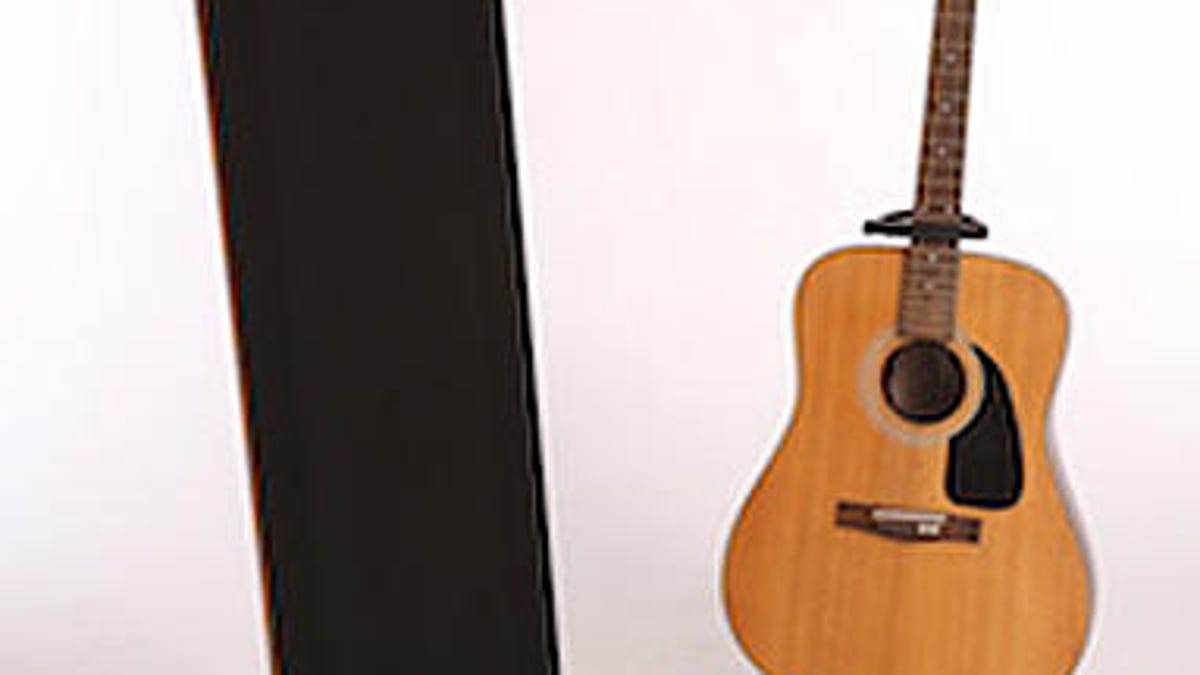Magnepan MMGi speakers are a stupendously thin wall of sound
Chances are you've never heard -- or seen -- a speaker that sounds like the Magnepan MMGi.

Magnepan MMGi speaker
Magnepan is known for its large flat panel speakers, but it also offers smaller, more affordable ones. The original MMG shared much of the same tech as the bigger Magnepans and won the hearts of many aspiring audiophiles. That speaker debuted in 1995, so it's big news that Magnepan has now released the revised MMGi, costing $650 per pair.
The speaker stands 48 inches high and is 14.5 inches wide, but just 1.25 inches thick. Magnepans differ from conventional speakers in the way they project sound into a room: Whereas box speakers radiate sound forward, Magnepan panels radiate from the front and rear surfaces. Most speakers have round dome tweeters and cone midrange and/or woofer drivers, but the MMGi's thin-film, approximately 11 by 40 inch "quasi-ribbon" diaphragm produces bass, midrange and treble frequencies.
No wonder the MMGi sounds bigger -- and its stereo imaging closer to life-size -- than any bookshelf or small tower speaker you or I have ever heard. Magnepan has been refining this technology since the early 1970s, and builds all of its speakers in White Bear Lake, Minnesota.
The MMGi's impedance is rated at 4 ohms, and the speaker is available in natural or black solid oak trim with off-white, gray or black fabric grills.
I did the bulk of my MMGi testing with the speakers hooked up to a $799 Outlaw Audio RR 2160 stereo receiver. The sound with cellist Yo-Yo Ma and pianist Kathryn Stott's lovely duet album "Songs From the Arc of Life" took my breath away. Their music filled my room in ways box speakers never do, the cello seemed so much closer to life size, and the two instruments sounded very clear.
Magnepan MMGi speakers are really thin!
Then with purely electronic music from Cliff Martinez' score for "The Knick: Season One" the MMGis deftly handled low bass synth lines. The "heartbeat" bass' definition and texture of the bass surprised me, but the MMGis' limited dynamic punch was evident. Then with Alt-J's "An Awesome Wave" album, the MMGis played vocals with rare presence, and the band's jumpy rhythms set my feet a-tappin'.
Granted, the MMGi's bass wasn't as deep or rich as ELAC's $499 per pair Uni-Fi UB5 bookshelf speakers, but the ELAC's stereo image is smaller and the sound is nowhere as transparent as the MMGi's. My wife rarely comments on the sound of speakers I'm reviewing, so when she said she really liked the MMGis I assumed she was joking. She wasn't: She was hearing things in Los Lobos "Kiko" album she never heard before!
My $380 NAD C316BEE stereo integrated amp was also a very decent match with the MMGis, but I couldn't resist also trying the $229 Emotiva BAS X A-100 stereo amp. That one gave up some low bass and midrange sweetness the RR 2160 delivered, but the A-100 is a terrific starter amp if you're strapped for cash or have a very small listening room.
I also tried the MMGis in my neighbors' apartment. They have a long narrow listening room, so they sit further away from their $2,250 per pair Zu Omen MKII speakers than I do from my speakers. First thing we figured out was that their 35 watt per channel Music Reference RM 10 MKII tube amp wasn't a good match with the MMGi -- the speakers need more juice than that. So we popped in my 250 watt per channel Bel Canto Ref500 amp. That was much better, but the bass still wasn't full enough so we hooked up a Hsu Research VTF-1 MK3 subwoofer to the system.
The match with the MMGis was excellent, and made them sound like bigger speakers. They really impressed my neighbor Kevin -- he remarked again and again about hearing new subtle details in music he knows well. He enthused about the way the panels energized the room, and projected a deeper soundstage than the Omen MK IIs, which are almost four times as expensive.
Still, when we returned to the Omen MK IIs and tube amp the sound was more muscular and alive. The MMGis with the sub didn't have enough oomph. I agreed, but in the end the MMGis sounded better in my room than theirs, partially because I sit a good deal closer to the speakers. Speaker-room matching is always a consideration with any high performance speaker.
Finishing up in my apartment I compared the MMGi with my Magnepan .7 speakers ($1,395 per pair), and they were better in every way. The sound was spatially bigger, clearer, with a more natural midrange, dynamics kicked up a notch, bass definition and fullness improved. The .7 sounds like exactly what it is, a more expensive Magnepan. If you can afford it, get the .7. Still, for the money the MMGi is an ear-opening speaker.
The MMGi can be ordered directly from Magnepan with a 60-day home trial. Magnepan speakers are also sold via a nationwide network of dealers.

